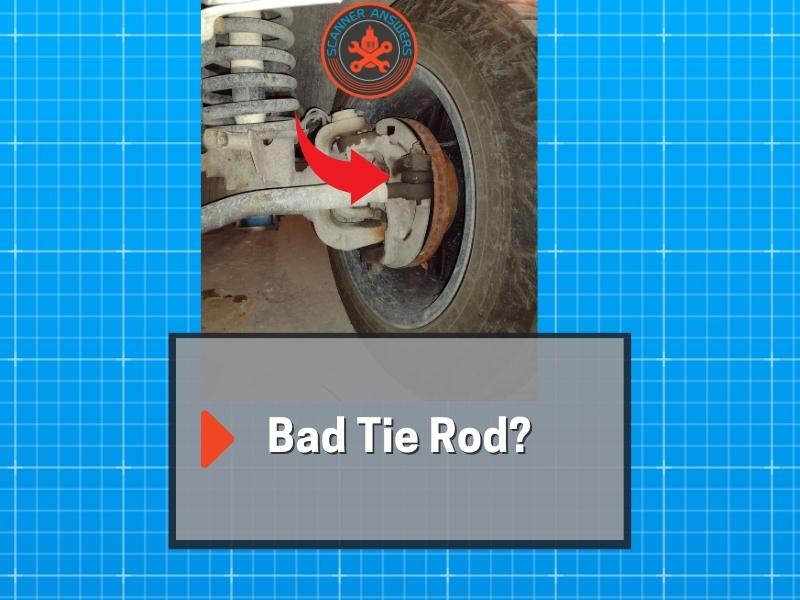Most common worn tie rod symptoms:
- Vibrating, shaking, loose or clunking steering wheel
- Uneven tire wear
- Clunking or clicking noise
- Poor handling
- Vehicle not in alignment
- Car not tracking in a straight line
Have you ever been driving and just felt some shaking in your steering wheel? Maybe you were taking a slow turn and heard some weird clunking noises coming from your car? If you have that is usually an indicator that you have a worn tie rod.
When a tie rod goes bad it can also cause uneven tire wear. If one side of your tire is worn down to the bead and the other side can pass the penny test you may have a tie rod that is loose and needs repair.
Having a tie rod that is worn or damaged can cause a misalignment in the front end which can typically result in a pulling to the left or right feeling in the steering wheel. The first thing it does is make your steering sloppy. It is your direct link from your steering to the wheel itself and when that gets worn, the wheel can steer slightly left and right of where you are aiming it. It causes your tire to wear out a lot fast and unfortunately, a lot of people don’t find out about their tie rods until they go for an estimate on tires.
Inner vs Outer Tie Rod
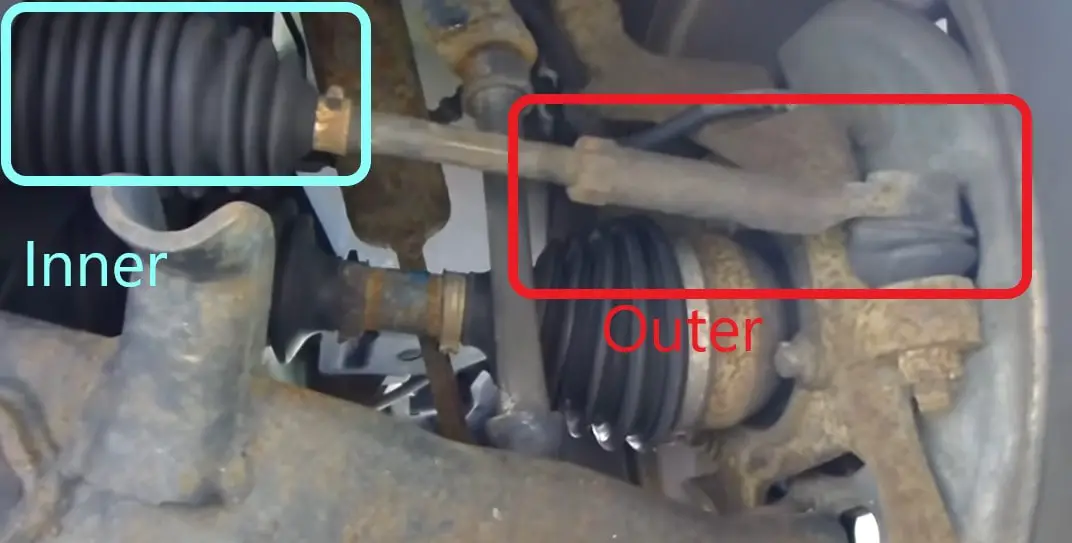
The inner tie rod is connected to a steering rack or steering gear box assembly and the outer tie rod ends are connected to each front wheel spindle. The tie rod’s job is essentially moving the wheels on the vehicle.
The ‘outer tie rods’ connect to the steering arms while the ‘inner’ connects to the steering rack.
Can bad tie rods cause shake, wobble and clunking?
The tie rods are connected to the front wheels of the vehicle, and YES a damaged tie rod can absolutely cause wobble and shaking mainly felt in the steering wheel. Along with the ball joint, these are the some of the most important parts in your steering and suspension system.
Typically, the faster you accelerate the more potent the shaking or wobbling will become which could result in losing control of the vehicle worst case scenario. Typically, when braking, it can cause vibration meaning you need to get your vehicle examined as soon as possible.
Bad ball joints, loose tie rods, loose shocks, bad calipers, bad bearings, bad rotors etc, can cause vibration when braking. The rule of thumb is to closely inspect every moving part to pinpoint the problem and fix/replace it.
Here is WHY and HOW a Bad Tie Rod Can Cause Wobbling and Vibration
Check out out guide to checking for bad ball joints.
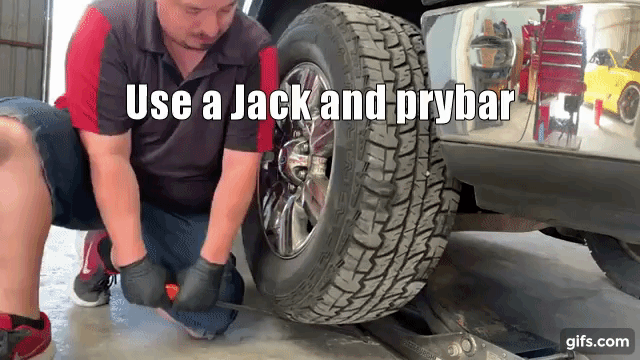
Can you tighten a loose tie rod?
Although it may seem like you can just tighten them up and all will be good, that’s not the case for tie rods. If a tie rod has been damaged or worn it is always best to have the damaged rod replaced.
With that I will say you don’t always have to change both the inner and outer ties. Sometimes you can just replace the bad inner tie rod if the outer checks out good.
Note: Tie rods are adjustable in order to maintain the alignment on the vehicle.
How long should tie rods last?
Tie rods can last as long as you own the vehicle. It all depends on where you take the vehicle and how your drive the vehicle. You may never have to change your tie rods; it all depends on the wear and tear you or another owner of the vehicle have induced on the vehicle. Most modern vehicles use a steering system called rack and pinion, which incorporates tie rods to help move the wheels. Tie rods are attached on both ends of the steering rack and as the pinion rolls over the slotted rack, they help push and pull the front tires as the steering wheel is turned. Tie rods offer an important function to a vehicle’s steering and therefore a car’s overall safety.
Changing worn tie rods on your vehicle can completely change the geometry of your vehicles steering system. So we suggest you get an alignment done after repairing a bad tie rod.
What causes tie rods to go bad?
The main cause of tie rod issues is usually the harsh road conditions. One main cause of tie rods going bad is lack of lubrication which plays hand in hand with harsh road conditions. A combination of things can result in your tie rod going bad, but it is usually user error by hitting a curb or a pothole too hard or causing some other trauma to your steering system. The rubber on the tie rod can end up dry rotting over time if not properly taken care of. Keep this in mind if you go to buy an older vehicle check the tie rods and make sure it is safe to drive or if you have to haul it.
Loss of grease or water intrusion into the joint also leads to accelerated wear.
Testing for bad tie rod ends

Checking tie rods is simple. There are a few different ways:
1. Grab your jack…
- lift the front tires up off the ground
- grab the tire at 3 and 9 o’clock.
- Push /pull on the tire to see if there is any movement in the joints or squeaking heard.
- If the tie rods are worn you will feel the movement in the tire, the worse it is the easier it is to both see and feel.
2. Grab the tie rod and give it a good shake
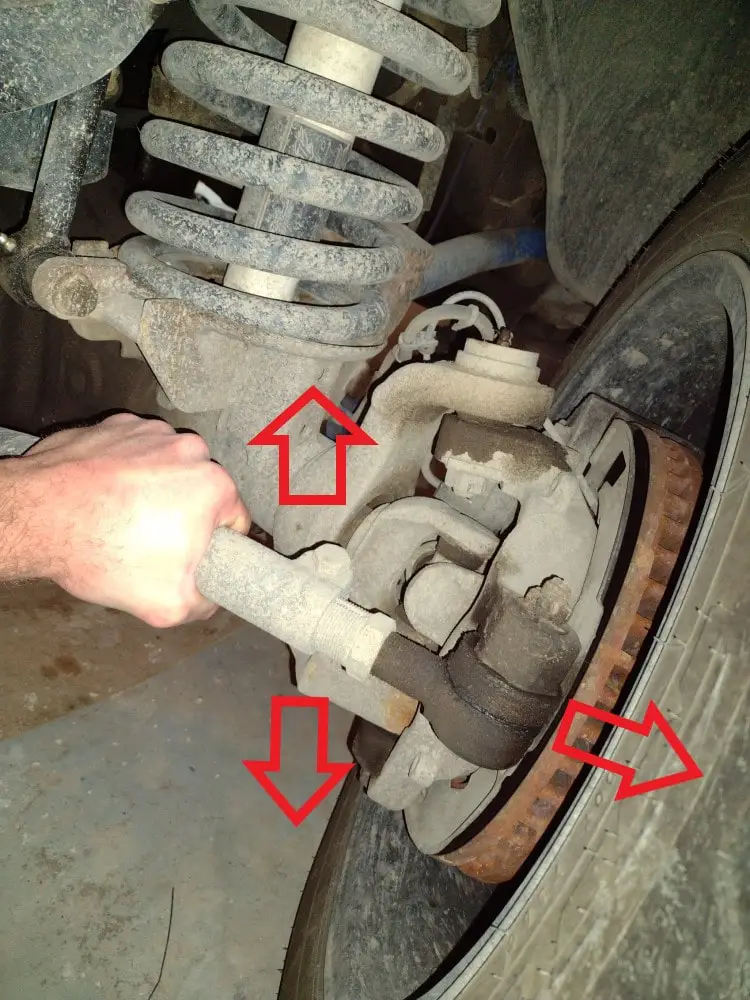
If you notice any movement or play, odds are you have a worn outer rod and need to replace it.
3. Inspect the outer tie rod boot
If you see a gash in the boot there will usually be sand and dirt in there too. This is a good sign it’s time for repair.
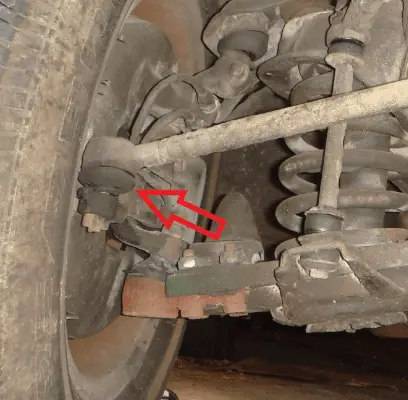
If you have worn tie rod ends, we suggest you get ’em fixed as soon as possible or you’ll experience excessive tire wear. And no one wants to be forking over the cash for a new set of treads!
Conclusion
If you have a shaking or wobbling symptom with your vehicle it is always best to bring your vehicle to a mechanic and have them take a look at your situation. A catastrophic event like losing control of the vehicle because of tie rod failure can cause harm to you or other drivers on the road.
Have your front suspension checked, most people would say a wheel out of balance, but there is a real possibility the tie rod bushings are going bad which will cause a wobble, a bit like a shopping cart. Over the course of time due to impacts and normal wear, both the ball and the socket wear down. When that happens, the ball is able to move without full contact with the socket, basically flopping around inside. The ability to move around in the joint leads to positive wear feedback, once there is free movement the movement causes more wear which causes even more movement which creates even more wear.
Learn more about ball joints vs tie rods
